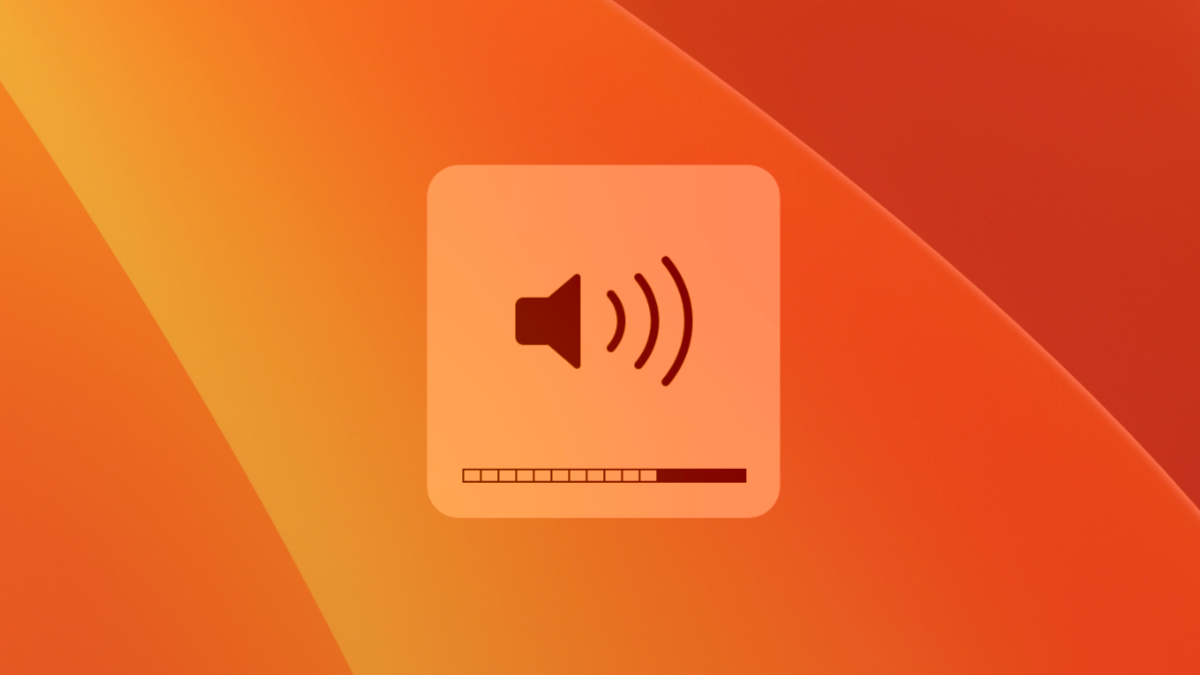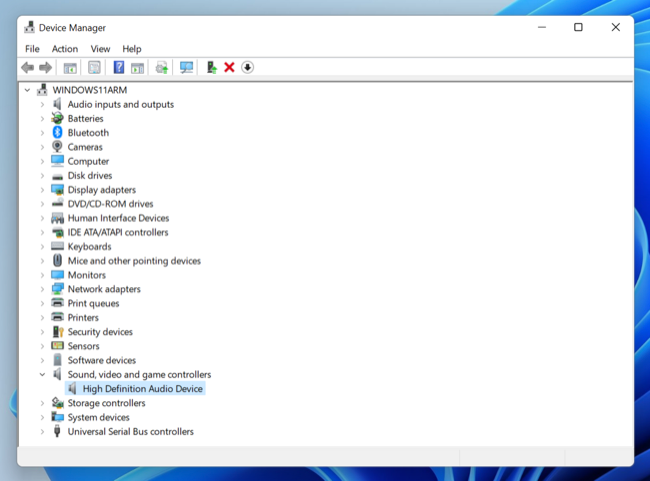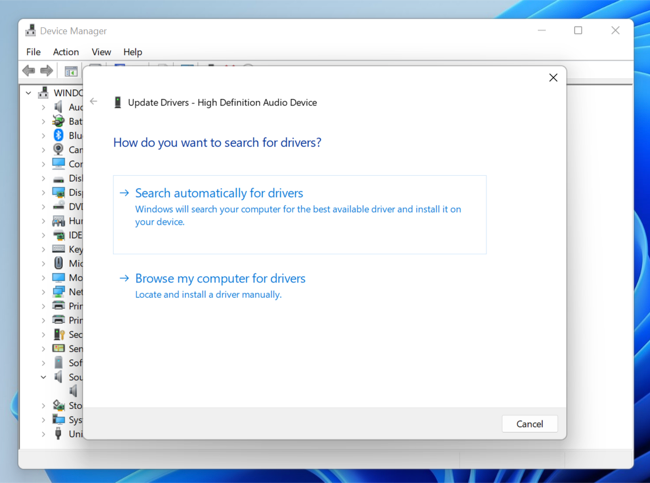Quick Links
Key Takeaways
Updating audio drivers can sometimes help, but buying a laptop with proven speakers will always get you better sound quality. Alternatively, buy a set of desktop speakers, use a spare wireless speaker, or repurpose an old hi-fi. Headphones, however, arguably provide better quality-to-cost ratio than any of these solutions.
Laptop speakers are frequently disappointing, with all but a handful of models to choose from if sound quality is a high priority. So what can you do about it, and what's the best bang for your buck when it comes to laptop sound?
Buy a Laptop With Decent Speakers
It might sound like a no-brainer, but speaker quality isn't something many people think about when it comes to buying a laptop. This is understandable since other factors like performance, build quality, and the typing experience take precedence when making a decision. The problem is that there's usually not a lot of room left in the laptop chassis for speakers that sound good.
But the easiest remedy to the problem of poor laptop sound is to fix it at the source and buy a laptop that meets (or exceeds) your expectations. Factor this into your buying decision, and if you already have a laptop with poor sound then keep it in mind when it's time to upgrade.
Some media outlets like Linus Tech Tips (and sister channel ShortCircit) test laptop speakers each time they unbox a new offering. Check out other reviews to see if sound quality is mentioned. Also consider reviews and unboxing videos of other prospective purchases to see how they perform. The results can be quite varied even between different models from the same manufacturer.
Apple has made a name for itself with the sound quality of the MacBook range over the years, and the 14 and 16-inch MacBook Pro continues the tradition. It's probably the best-sounding laptop out there if you can justify the cost, are happy with ARM-based Apple Silicon, and use macOS. The 2022 M2 MacBook Air follows closely behind.
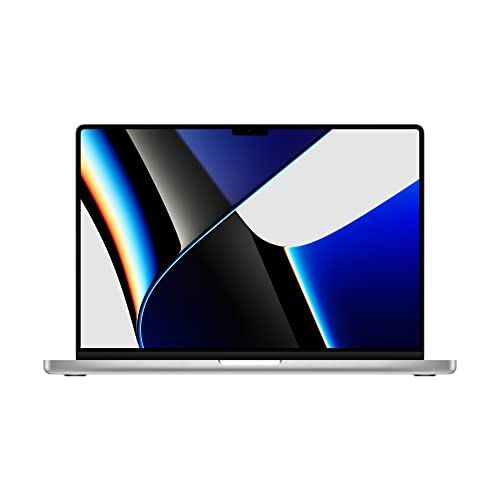
MacBook Pro (16-inch, M1 Pro, 2021)
The 2021 MacBook Pro is a beast of a machine both in terms of performance, build quality, battery life, and usability. It's also got the best integrated laptop speakers money can buy (probably).
On the Windows side of things, the Dell XPS range (including the Dell XPS 13, 15, and 17) has speakers to shout about. The HP Omen 16 (and others in the range) gaming laptop has a Bang & Olufsen speaker system that sounds good, and the ASUS ROG Zephyrus G14 has also turned heads for its Dolby Atmos-capable system. Microsoft also received praise for the sound quality in the Surface Pro 7 if a small touch-screen tablet form factor is what you're looking for.
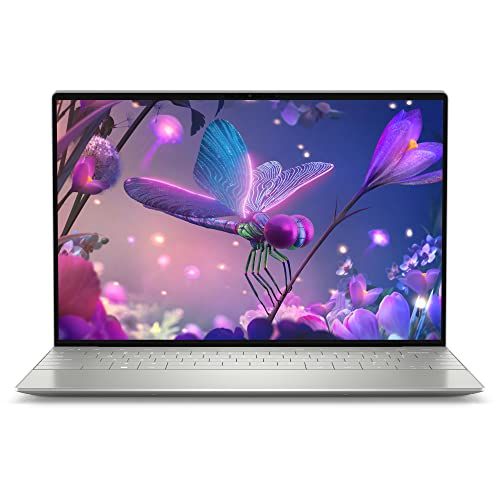
Dell XPS 13 (12th gen Core i7, 2022)
The Dell XPS 13 features impressive specifications for the money, with a 12th-gen Core i7 at the helm. It's also a hot contender for the "best Windows laptop sound quality" title.
If sound quality is important and you want to regularly use your laptop for watching movies, streaming videos, playing games, or listening to music; make sound quality a priority with your next purchase.
Use a Bluetooth or AirPlay Speaker
Many of us use Bluetooth speakers for convenience around the house, at social events, on the beach, or while camping. These battery-powered wireless speakers charge over USB and pair with just about any modern device with Bluetooth connectivity. They're ideal for use with a laptop if you haven't got any other options.
You can also use static speakers like Apple's HomePod mini (and discontinued HomePod) or Google's Nest and Home devices as a speaker. These lack a battery and have to be connected to mains power to work. For the HomePod, you'll need to use AirPlay which you can do from any MacBook or using iTunes on Windows. For Google devices, use the Google Home app to enable Bluetooth audio instead of using built-in services or Google Cast.
Remember that wireless audio over Bluetooth or AirPlay may incur a delay, which might not be ideal for gaming other low latency-dependent tasks. Audio must also be compressed which can degrade the listening experience somewhat.
Use a Home Stereo
Most laptops still ship with a 3.5mm stereo output, which means you can plug them into just about any analog receiver you already have around the house. This could be a midi system from the 90s, a vintage 1970s integrated amplifier, or a modern stereo receiver. If you already have a stereo setup in your home you can use your laptop as a source and get some use out of it.
If you want the best possible sound, or your laptop lacks the required output (like the Dell XPS 13) buy a digital to analog converter (DAC). External DACs convert digital signals to analog ones at a higher quality than those inside most laptops.
This is a good solution if you already have an old stereo system that you're not using since you no longer play CDs or listen to FM or AM radio. Many of these systems are capable of using a computer, smartphone, tablet, or anything with 3.5mm output by selecting "AUX" or "Line in" as a source.
Add Some Desk Speakers
If you spend enough time at your desk it may be worth spending a chunk of change on some decent speakers. Most deliver better sound than the built-in speakers in any laptop you can buy, MacBook Pro included. The sky is the limit in terms of what you want to spend here, so let your budget dictate what you opt for and ideally test them out before you buy.
A 2.1 system like the Logitech Z407 includes two satellite speakers and sub-woofer, Bluetooth and a 3.5mm connection, and a wireless control dial you can stick to your desk for quick adjustment. The Creative Pebble Plus 2.1 offers similar to users on a budget for around half the price. These are good for general use, music playback, and even gaming.
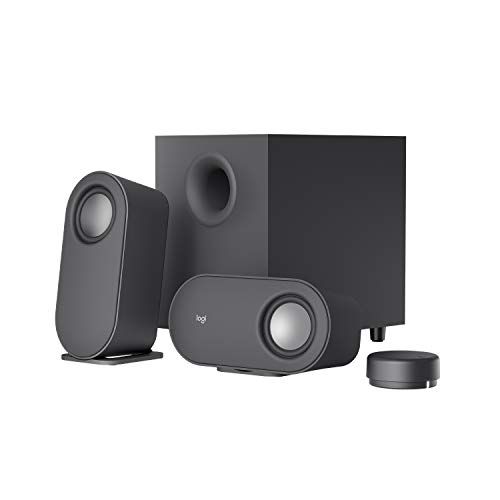
Logitech Z407
Take gaming, movies, and music to the next level with a Logitech Z407 2.1 system, featuring a sub-woofer and two satellite speakers with Bluetooth connectivity.
The Harmon Kardon SoundSticks 4 are a real statement piece, with 140w RMS power, iconic transparent design, and Bluetooth connectivity for the modern age. This system first made an impact during the days of the iMac G3 and the aesthetic has stood the test of time. Pioneer's DJ DM-50D studio monitors cost around the same but are geared to neutral response for music production on a budget.
Active speakers are a great option if you have the budget. These come as a set of two speakers with an amplifier in each, perfect for use with a range of inputs like turntables, HDMI sources, and even smartphones. The Fives by Klipsch is a relatively well-priced speaker package for this category, with the Q Acoustics M20 system costing a bit more.
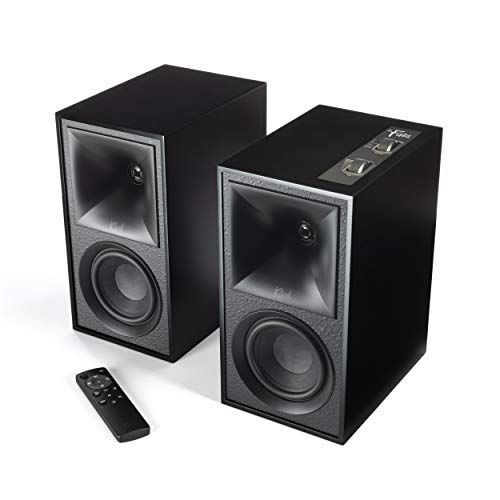
Klipsch The Fives
Turn heads with The Fives from Klipsch, active speakers with a real wood finish and Bluetooth connectivity.
Use Wired or Wireless Earbuds or Headphones
It may be a last resort if you're looking for a speaker solution, but headphones will almost always provide better sound quality than built-in laptop speakers. Your existing wired or wireless headphones should work fine over Bluetooth with most laptops.
Comfort is a factor, especially over long periods of use since headphones are never as even the best headphones aren't as comfortable as listening to music on a loudspeaker. If this is a concern, look at open-back headphones which are less sweaty at the cost of having less sound isolation. You'll head more of the room around you and sound will leak heavily, but if you're looking for a speaker replacement this might not be a huge anyway.
You may also need a headphone amp (or DAC) to make the most of higher impedance headphones like the Sennheiser HD 660 S. Such a setup provides the best sound quality for your money, and your headphones and amplifier can be used with a wide variety of devices.
Update Your Windows Sound Drivers
If you use Windows there's a chance that updating your sound driver could result in slightly better audio. You can do this two ways in Windows, either using a "command center" type application that shipped with a pre-built computer (from a manufacturer like Dell or HP) or by telling Windows to search the web for drivers manually.
The first is pretty straightforward: launch the "command center" that shipped with your computer and install any pending sound driver updates. The second method is also easy enough using Windows Device Manager.
Right-click on the Start button and select "Device Manager" then expand the "Sound, Video and Game Controllers" category and find your audio device.
Right-click on it then choose "Update Driver" and select "Search automatically for updated drive software" in the window that shows up.
You can also choose "Browse by Computer for Driver Software" if you have downloaded a specific driver from a manufacturer's website. For more, learn about fixing audio problems in Windows 10 and 11.
Manage Your Expectations
Laptop speakers, just like modern TV speakers, are frequently disappointing. A lack of space inside the laptop forces the use of relatively small speakers and makes for a lackluster listening experience.
Bass suffers since low-end response is tied closely to the size of the sub-woofers used. Budget laptops frequently focus on raw performance at the cost of other factors, and sound quality is often at the bottom of the pile. Fortunately, adding a pair of speakers, using something you already own, or simply connecting your headphones can remedy the problem.
Be aware of software solutions that promise to increase audio quality. Though these can add interesting effects like virtual surround sound, they rarely improve sound quality beyond what is already there. Overall sound quality is tied closely to hardware, and no amount of software (outside of perhaps improved drivers) can make up for underwhelming speakers.
If your laptop supports it, you might want to enable "Windows Sonic" spatial audio. For a space-saving device that ticks multiple boxes, consider Microsoft's all-in-one speaker and USB-C hub too.

